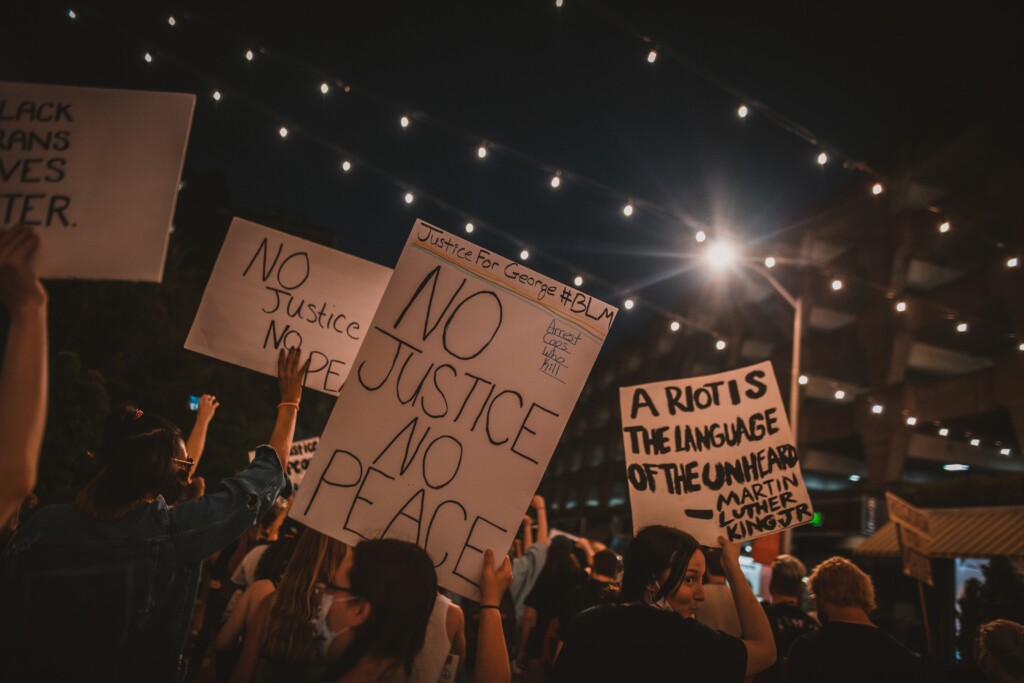The following essay will look at how to work toward epistemic justice. This will essay will firstly, draw on the definitions of Fricker on testimonial injustice and her proposals to minimalize it. Then, I will argue, with the use of Anderson’s work that in order to really work towards epistemic justice, combined with an individual solution, institutional changes need to be made if we are to achieve epistemic justice. I will present an example as to why this combination is important and present a response to a plausible counter-argument.
According to Fricker (2007) testimonial injustice refers to an instance in which upon hearing someone talk you undervalue (i.e. credibility deficit) their credibility (p. 21). This could be due to someone’s accent, gender, ethnicity, etc. Hence, testimonial injustice is rooted in negative prejudice, which is why the term used to revert to this term of injustice is “identity- prejudicial credibility deficit” (Fricker, 2007, p. 27). Prejudice is rooted in stereotypes, the latter describing believing that certain characteristics are attributes of people of a certain group (Gilovich et al., 2016, ch. 11, p. 397). According to Gilovich et al. (2015), a stereotype can be negative or positive, if negative it can lead to prejudice and discrimination. Prejudice refers to a negative attitude or emotional response towards a group and its individual members (Gilovich et al., 2015, ch. 11, p. 398). Fricker (2007) suggests that testimonial injustice needs to be systematic for it to be of importance for social justice (p. 29). Systematic testimonial injustices are generated from the negative stereotypes that follow an individual in various dimensions of social activity such as educational, professional, sexual, religious, political, etc. (Fricker, 2007, p. 27). Fricker (2007) suggests a testimonial injustice occurs when even in face of credible evidence presented by the speaker, the hearer focuses on the prejudices associated with the group the speaker appears to be part of.
“According to Gilovich et al. (2015), a stereotype can be negative or positive, if negative it can lead to prejudice and discrimination.”
So, what can be done to work against testimonial injustice (i.e. identity-prejudicial credibility deficit)? In the cases in which there are identity prejudices, Fricker (2007) suggests that there is a risk of testimonial injustice (p. 86). Upon showcasing a few examples, Fricker (2007) identifies that what the hearers are doing is failing to remedy identity prejudice (p.89), thereby failing to also be critically aware of how the negative stereotype has affected their perceptions and leaving testimonial sensibility unchecked. She ponders whether there is a trait (i.e. virtue) that a listener needs to have to avoid the possibility of negative stereotypes altering their perception of the speaker (p. 86). Thus, the way to work against testimonial injustice is to “develop a virtue of testimonial justice” or “anti-prejudicial virtue” (Fricker, 2007, p. 92). This involves a reflexive critical social awareness of the ways in which a hearer’s and a speaker’s social identity can affect either the judgment in credibility or the presence of a negative stereotype (Fricker, 2007, p. 92). Fricker (2007), suggests that listeners should neutralize the impact of prejudice when judging a speaker. The philosopher makes a distinction between naive and corrective testimonial virtue. The first entails making judgments of credibility that are non-prejudicial without self-monitoring (Fricker, 2007, p. 93-95). This is rare, as society is filled with social prejudices. Corrective testimonial virtue refers to a continuous reflection that can become spontaneous through habituation or familiarity, ultimately leading to the disruption of prejudice (Fricker, 2007, p. 96). Fricker (2007) also suggests that the virtue could become spontaneous as the result of a reconditioning of a testimonial sensitivity. The ultimate solution for Fricker (2007) is to combine reflectiveness and spontaneity, where the listener can easily recognize the common prejudices whilst simultaneously learning to look out for the less recognizable prejudices (p. 98).
Fricker (2007) is not wrong in showing that testimonial justice is something to be worked on at the individual level. However, there is a missing link. In her theory, Fricker (2007) states that systematic testimonial injustices come from the identity- prejudices that follow an individual among various dimensions of social activity. Hence, this implies that her theory should not only regard the actions that an individual needs to take or aspire to but rather structural changes that need to be made and implemented as well to achieve testimonial justice. Anderson (2012) proposes that the solution is to also concentrate on the structural epistemic injustices by looking at, for example, the role of education, governments, etc. She states structural changes can support individual virtue, by surrounding an individual with favorable conditions. Another criticism made by Anderson (2012) towards Fricker (2007) is that the latter does not emphasize the extent of structural forms of testimonial injustices. Hence, she proposes that there might be also other reasons why social groups unfairly experience diminished credibility. She gives the example of education. Whilst education is a marker of credibility, Anderson (2012) notes that there have been groups that have not been granted access to good education, and hence are already disadvantaged when it comes to being believed. Anderson (2012) states: “An original structural injustice […] generates additional structural inequalities for exercising full epistemic agency, which is an injustice to the speakers.” (p. 169). Therefore, in combination with individual virtue and self-reflection, it is clear that reforms need to be implemented structurally to change perceptions rooted in those of the original structural injustices.

An example of why it is important to look at both individual and structural changes is in the medical field (LastWeekTonight, 2019). The video by John Oliver, speaks about bias in medicine, more specifically about gender and race bias, in the U.S. The presenter exposed that in the United States if you are a woman or a person of color, you are less likely to be believed by a doctor, which could lead to an impact on your medical treatment. This is a clear example of the identity-prejudice credibility deficit mentioned above. Not providing the correct medical care based on the person, is epistemically unjust. As Fricker (2007) advises, doctors should be working towards being reflective and spontaneous when listening to their patients, however, there is an underlying issue. As John Oliver reports that within the medical community when studying bodies to learn symptoms and diseases, experts have relied only on using data from men (predominantly white) (LastWeekTonight, 2019). As a result, this often leads to misdiagnosing and dismissing, for example, women, that were experiencing different symptoms than those studied. This ties into the importance of the structural approach proposed by Anderson (2012). In this case, not only should doctors be reflective and critically aware, but in situations in which the individual is not able to, due to underlying biases deriving from his outdated studies, structural changes need to be made to render the environment favorable for the pursuit of the virtue of testimonial justice. A solution for this example would be to make sure that doctors are updated on the new studies that make use of a more diverse sample within experiments.
A counter-argument or rather a question that could oppose the view of combining individual and structural changes is: “Why to implement structural changes if as an individual I am informed and not prejudice?”. As Anderson (2012) states, the two are not in competition, but rather, structural changes are there to support and create favorable conditions for all parties. As Gilovich et al. (2015) suggest, elements of human nature encourage discrimination, stereotype, and prejudice (ch. 11, p. 439), this is because our mind categorizes the world to simplify the task of processing the stimuli surrounding us (p. 417). Hence, having a solid structure in place can help make up for the error made by mistake. Reforming social institutions allows for something to not be excusable and normalizes individuals to also work on their actions.
References
Anderson, E. (2012). Epistemic Justice as a Virtue of Social Institutions. Social Epistemology, 26(2), 163–173. https://doi.org/10.1080/02691728.2011.652211
Fricker, M. (2007). Epistemic Injustice: Power and the Ethics of knowing. Oxford University Press.
Gilovich, T., Keltner, D., Chen, S., & Nisbett, R. E. (2015). Social Psychology (Fourth ed.). W. W. Norton & Company.
LastWeekTonight. (2019, August 19). Bias In Medicine: Last Week Tonight with John Oliver (HBO) [Video]. YouTube. https://www.youtube.com/watch?v=TATSAHJKRd8







